Zeekr 7X VS Toyota bZ4X: Which car, from China or Japan, is more futuristic?
 Kevin WongOct 15, 2025, 05:14 PM
Kevin WongOct 15, 2025, 05:14 PM
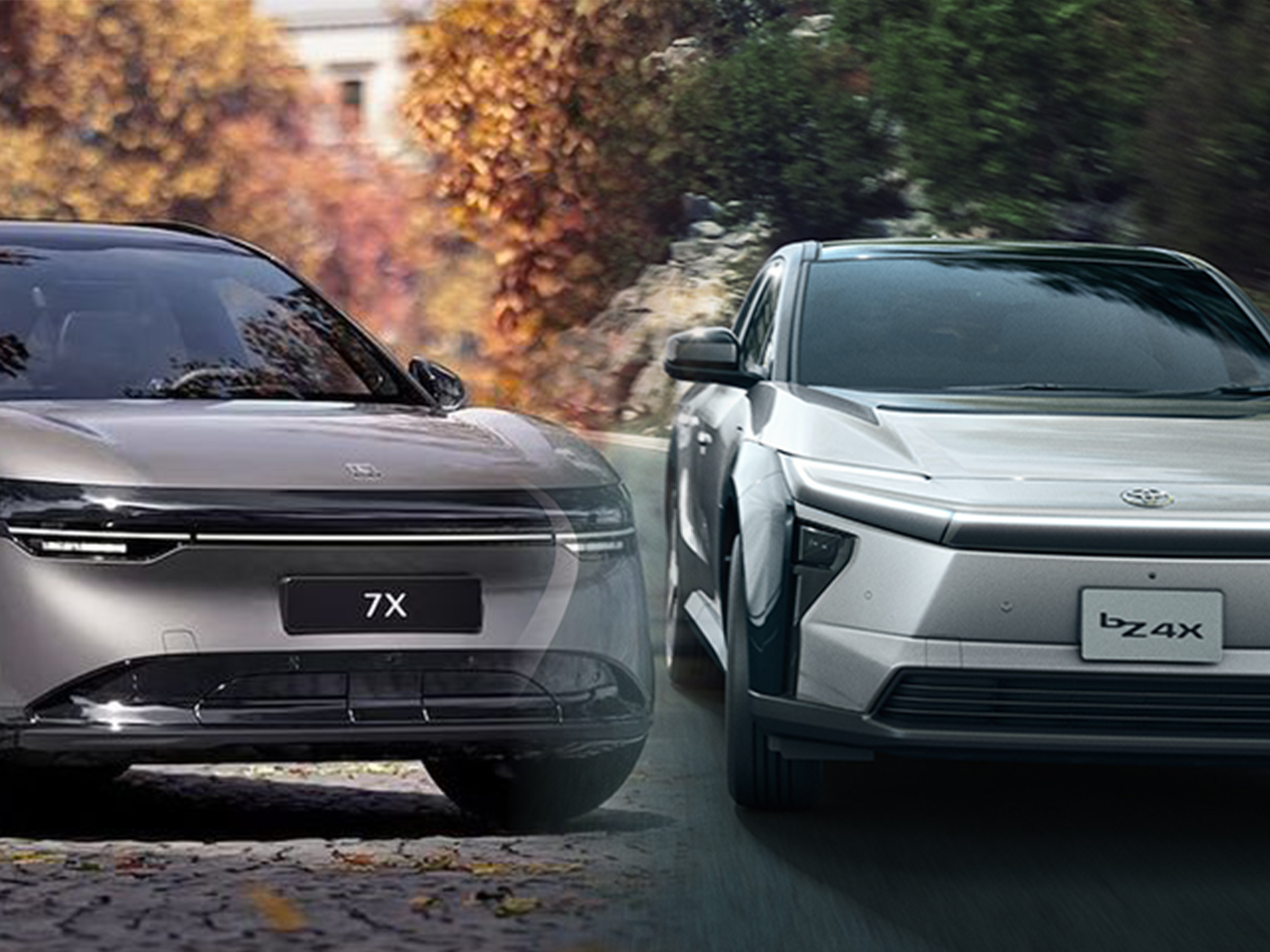
[PCauto] When bZ4X was first launched, I saw Toyota's bold attempt. Two-tone fender design, an upright dashboard instrument panel, and an oversized central control screen — such designs would never appear on Toyota's conventional fuel cars. Perhaps this reflects the Japanese automaker's vision of the future. It uses a lot of straight lines to create a hard and cold aesthetic.
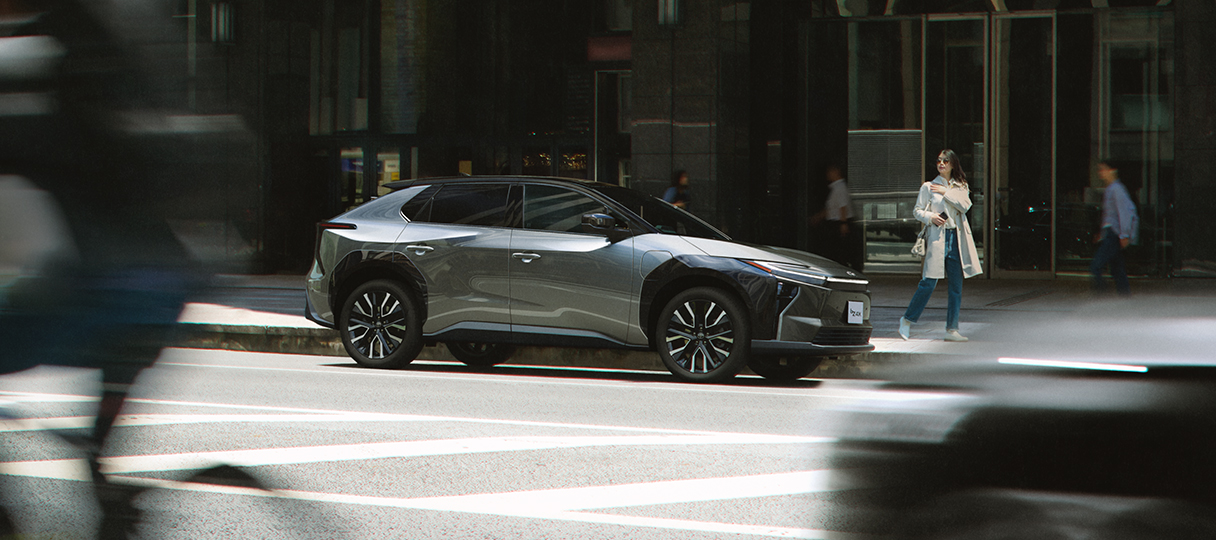
In contrast, the Zeekr 7X presents an entirely different image. This is an electric SUV from China, featuring an exterior with plentiful soft curves and a clam-shell hood commonly used in British luxury cars. The Zeekr 7X tells us that the future is not about cold, metallic rigidity.
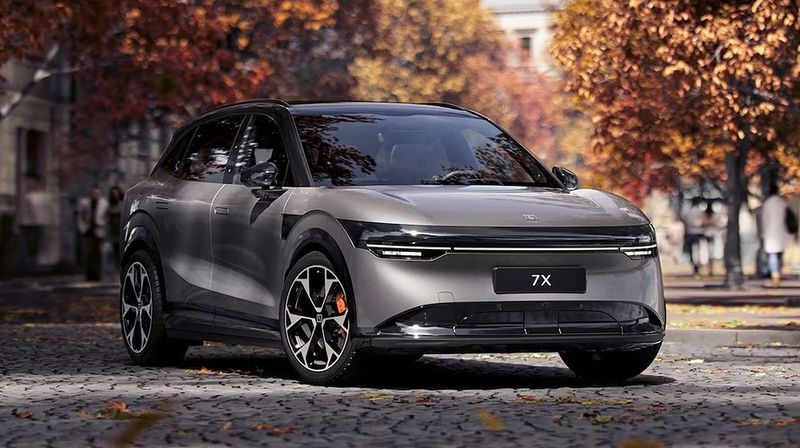
This reflects the difference in how Chinese and Japanese automakers envision the future. Which style would you prefer, especially when the dimensions and price points of these two vehicles are quite comparable?
Toyota and Zeekr 7X Price and Dimensions
· bZ4X Long Range FWD Booking Price: 1,5xx,000 Baht/RM19X,000
· bZ4X Long Range AWD Booking Price: 1,6xx,000 Baht/RM21X,000
· Zeekr 7X Standard RWD : 1,399,000 Baht/RM179,800
· Zeekr 7X Long Range RWD : 1,599,000 Baht/RM190,800
· Zeekr 7X Performance AWD : 1,799,000 Baht/RM226,800
Toyota bZ4X:
Length 4,690mm
Width 1,680mm
Height 1,650mm
Wheelbase 2,850mm
Ground Clearance 200 – 201 mm
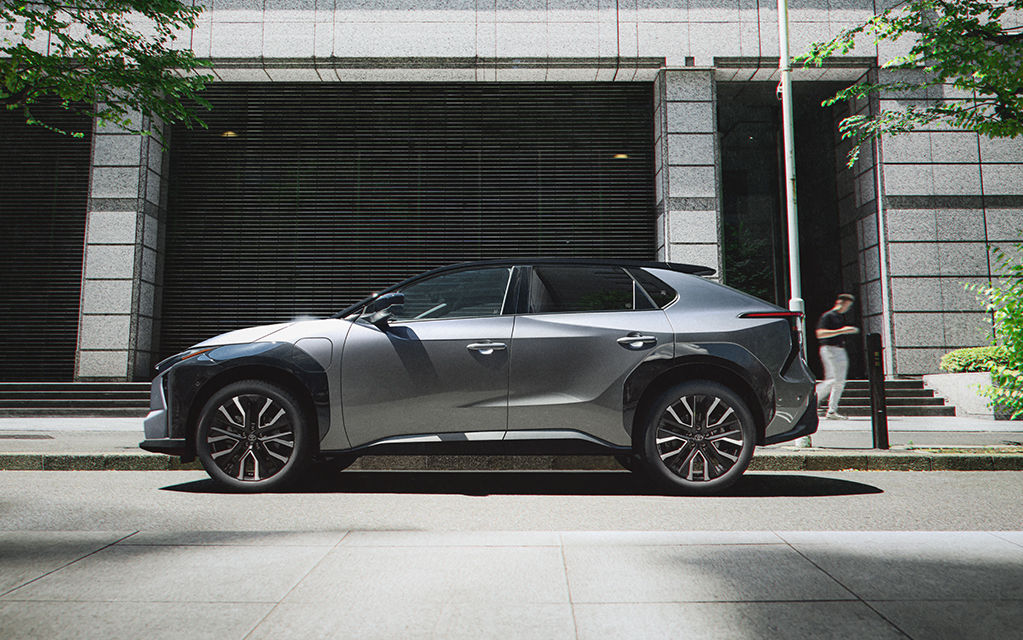
Zeekr 7X
Length: 4,787mm
Width: 1,930mm
Height: 1,650mm
Wheelbase: 2,900mm
Ground Clearance: 172 – 172mm
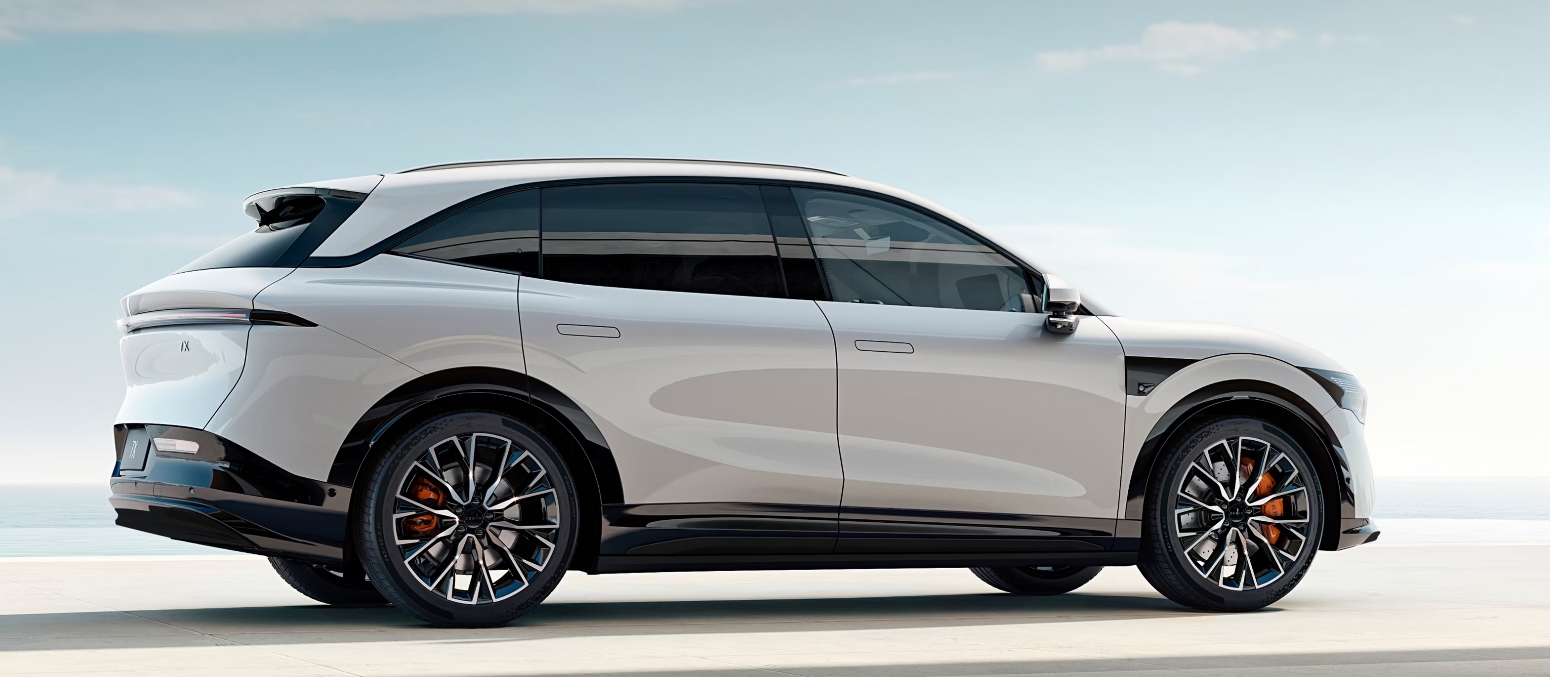
Design Philosophy Differences Between Toyota bZ4X and Zeekr 7X
The Toyota bZ4X (2025 mid-cycle facelift) is based on the e-TNGA pure electric platform, continuing Toyota's philosophy of "practicality and sustainability."
While retaining the traditional SUV practicality, the bZ4X conveys a signal of electrification transition through detailed redesigns, such as the combination of a closed-off front face with aerodynamic diffusers, which align with the electrification trend while maintaining Toyota SUV's rugged style.
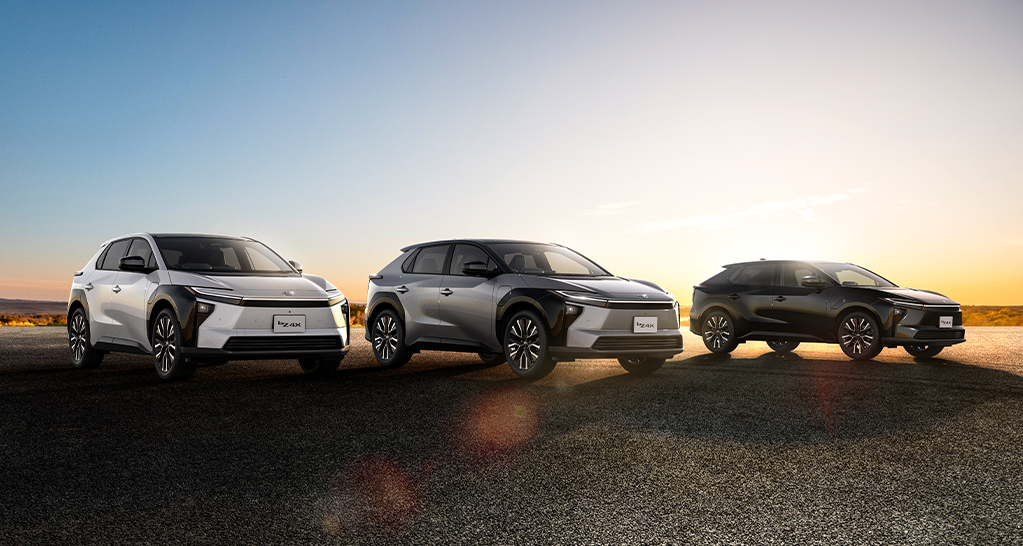
The Zeekr 7X, on the other hand, completely abandons traditional design frameworks, adopting the "Hidden Energy" luxury design language with a core concept of "technological invisibility." Through hidden light clusters, clamshell hoods, and other innovative techniques, it merges mechanical structure with aesthetics. Its 0.618 golden ratio body proportions and floating roof design reflect a pursuit of luxury coupe aesthetics.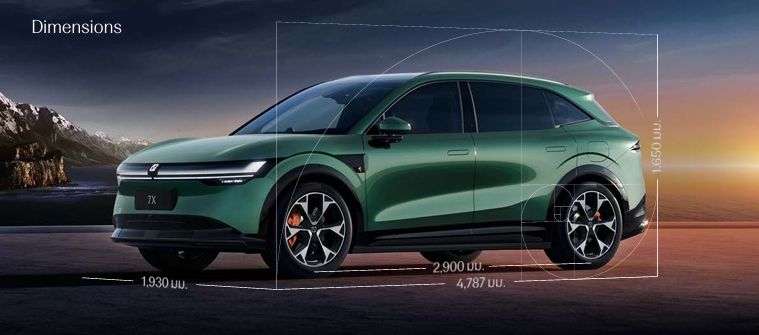
Zeekr 7X vs Toyota bZ4X Exterior Design Comparison
Front Design Comparison
The bZ4X front adopts a "hammerhead shark" three-dimensional sculptural design. The hood and headlights are integrated to form sharp angles, combined with split C-shaped light saber daytime running lights, which retain the Toyota family identity while achieving a sense of technology through the LED light strip interaction.
The front bumper's aerodynamic deflector trim and the multi-horizontal grille design suggest its mild off-road capability. This design is rare in the electric vehicle sector.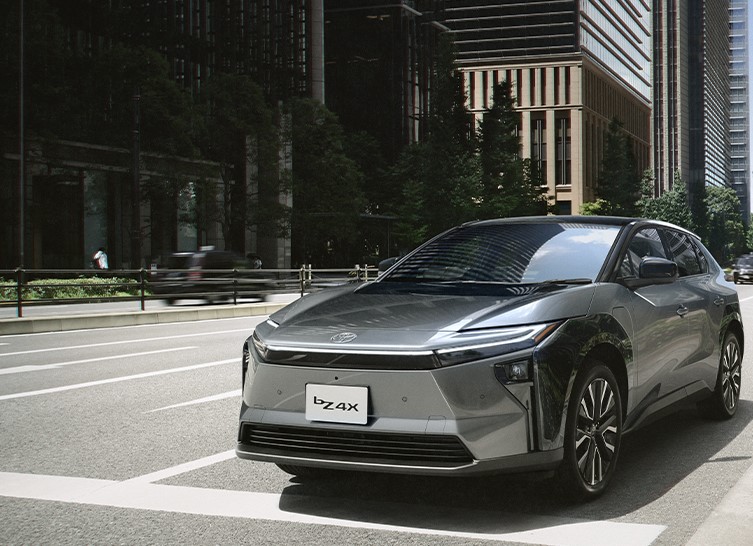
On the other hand, the Zeekr 7X front completely breaks convention: hidden light strips seamlessly connect with the clam-shell hood, integrating the daytime running lights into the recess of the hood.
The most unexpected feature of Zeekr 7X is the ZEEKR STARGATE intelligent light curtain, which supports dynamic interaction and can project the brand logo and personalized patterns at night, significantly enhancing the sense of technology.
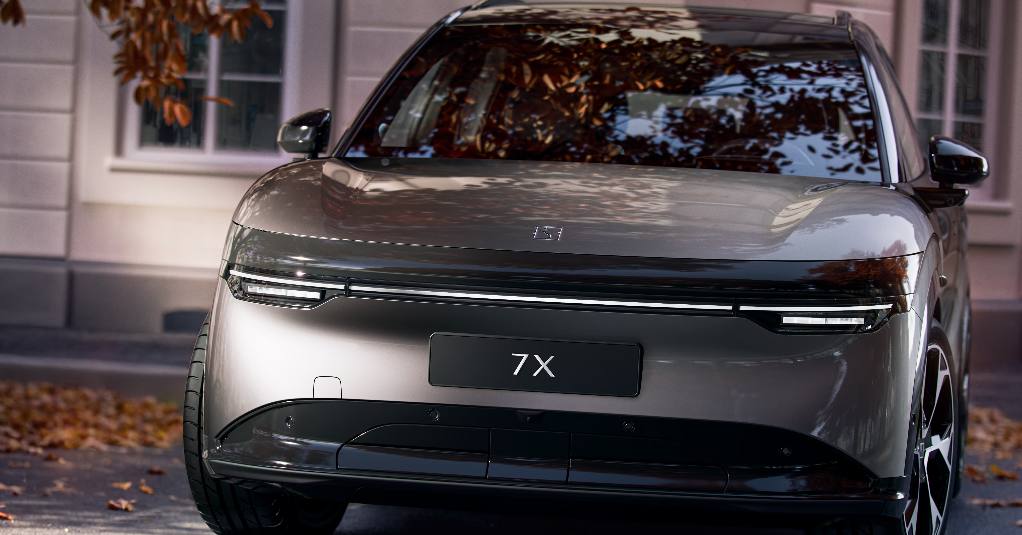
Side Design Comparison
The side of the bZ4X continues the classic proportions of a crossover SUV, retaining the mechanical texture through scratch-resistant wheel arches and traditional door handles, while the layout of the fast-charging port on the left front fender balances practicality with concealment. The floating roof extends to the taillights through double waistlines, creating a visual contrast with the robust line language and the 2850mm wheelbase, ensuring both interior space and a sporty stance. This design not only ensures manufacturing convenience but also enhances the refinement through multi-section chrome trim.
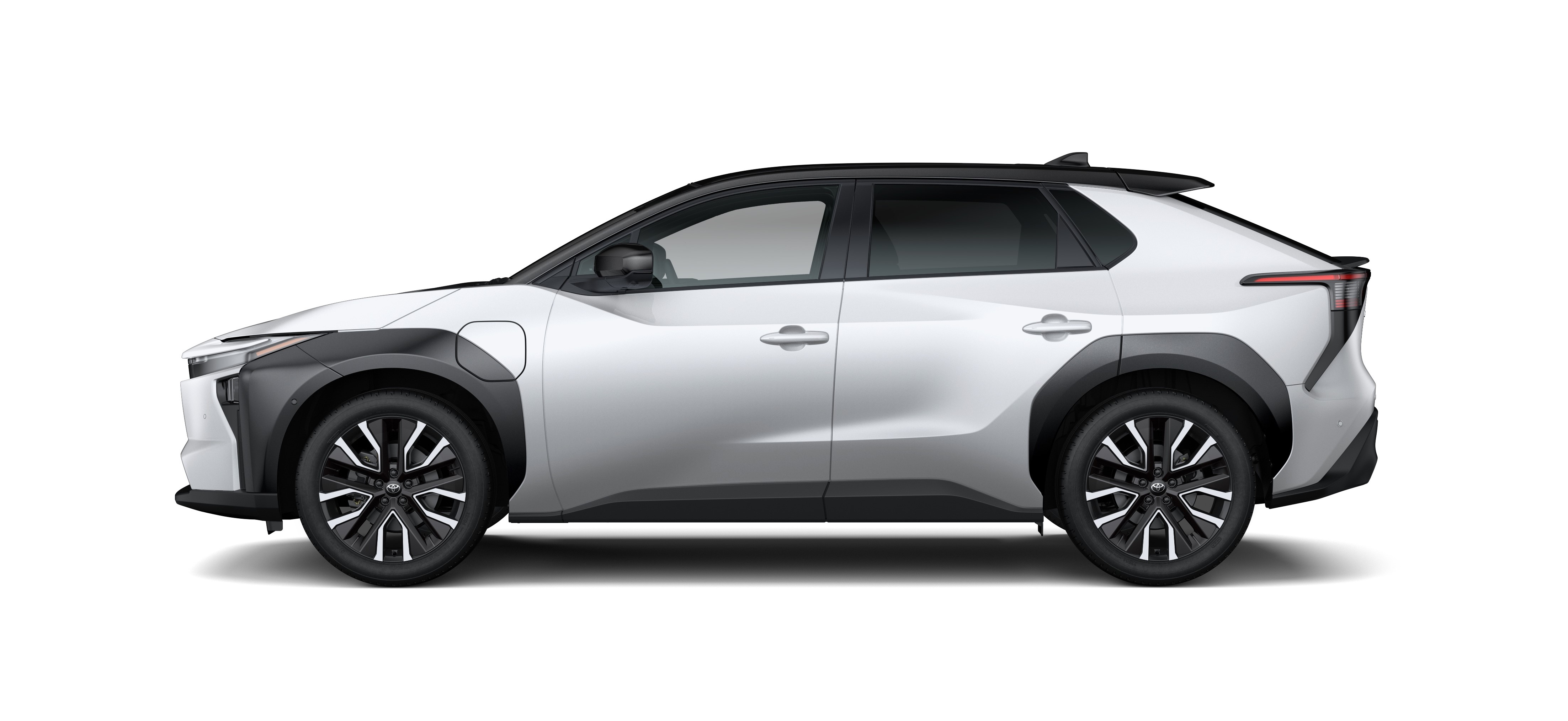
Zeekr 7X adopts the "Arc Light Skyline Contour" design on the sides, with a concealed shoulder line extending from the A-pillar to the rear, forming a flowing light band effect under light and shadow. Frameless doors and hidden door handles not only reduce wind resistance (Cd 0.28) but also use magnesium-aluminum alloy materials to create a "Stargate"-like sense of transparency. The floating roof employs laser welding technology, with the 0.618 golden ratio and 2925mm wheelbase jointly constructing an elongated visual proportion. This design sacrifices some practicality (such as the sealing of frameless doors) but achieves a 95% stamping integration rate, showcasing a sense of luxury.
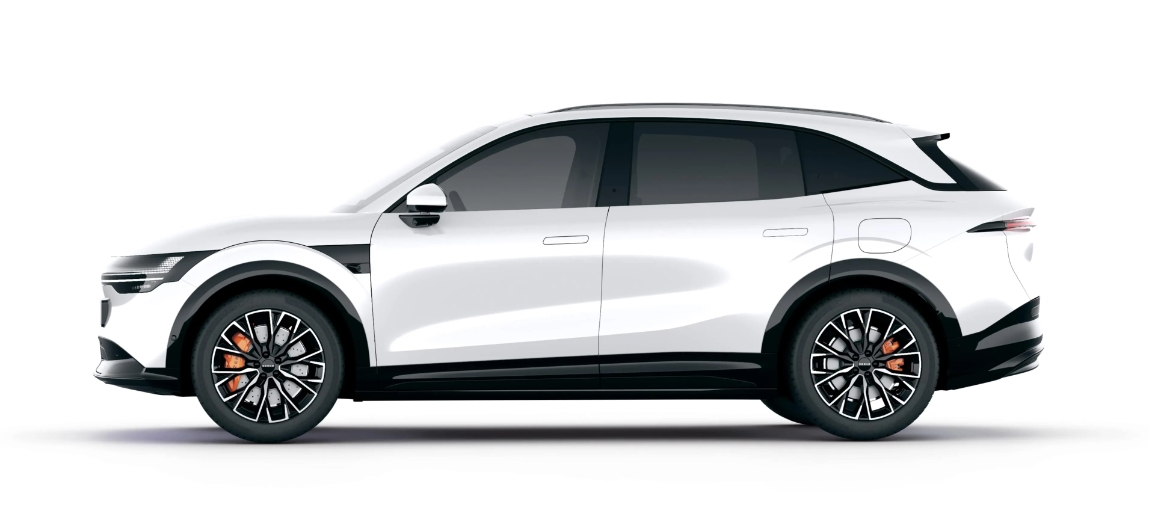
Rear Design Comparison
The rear of the bZ4X features a combination of full-width taillights and a dual-section spoiler. The horizontal reflector strip on the rear bumper and the hidden exhaust system create a "futuristic mech" style. The internal structure of the taillights adopts a matrix-style LED light source that, when illuminated, presents a "light sword" cutting effect, forming a visual correspondence with the daytime running lights at the front. This design ensures recognition while enhancing the SUV's stability with a trapezoidal tailgate shape.
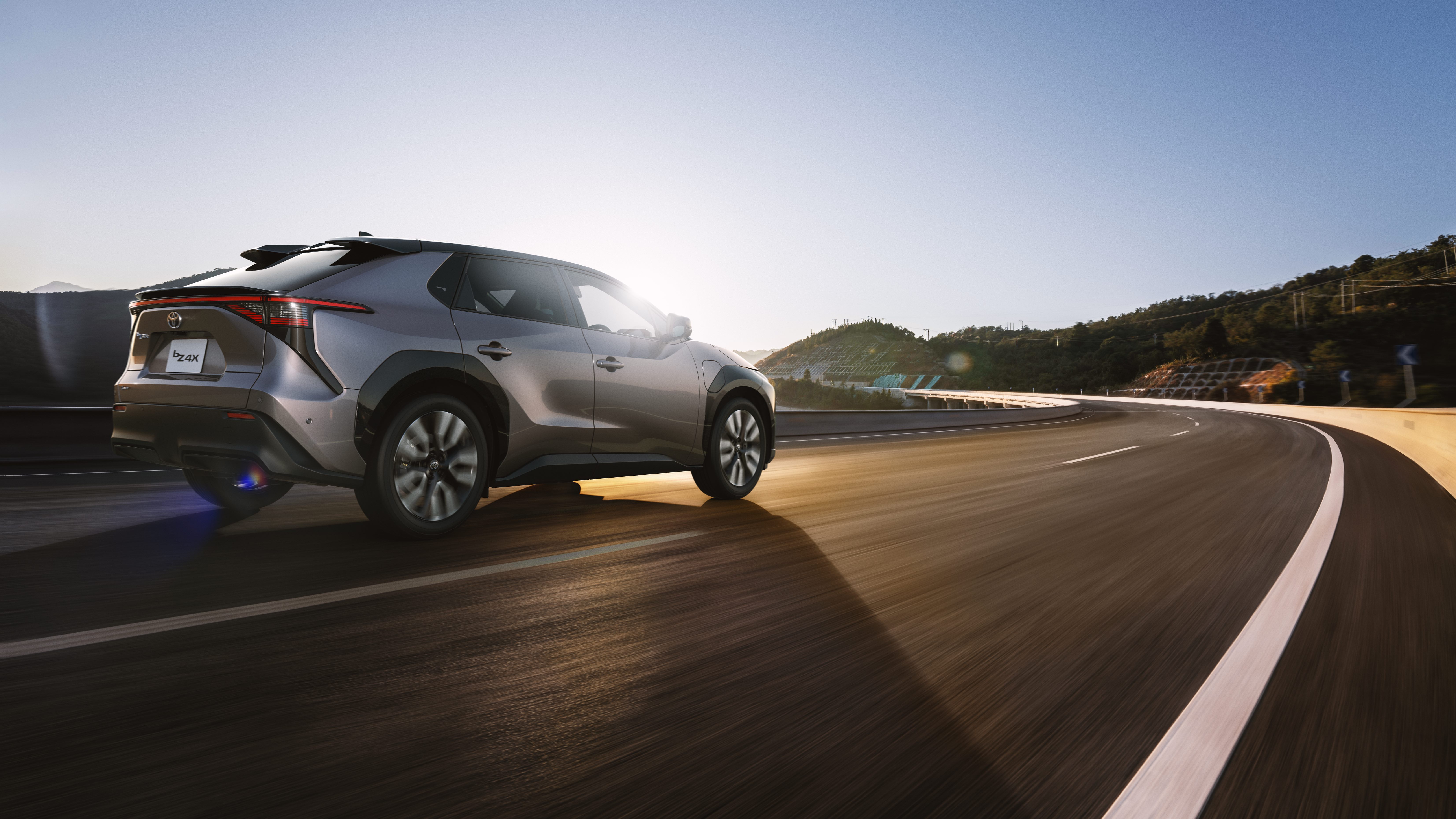
The floating light tail lamp of Zeekr 7X's rear adopts SUPER RED ultra-red light LED technology, with a light band width of 220mm, supporting breathing light language interaction. The combination of the integrated electric tailgate and the hidden spoiler creates a "space capsule"-like enclosed visual effect. This design language stands out uniquely among luxury SUVs, forming a sharp contrast to the rugged style of the Land Rover Defender.
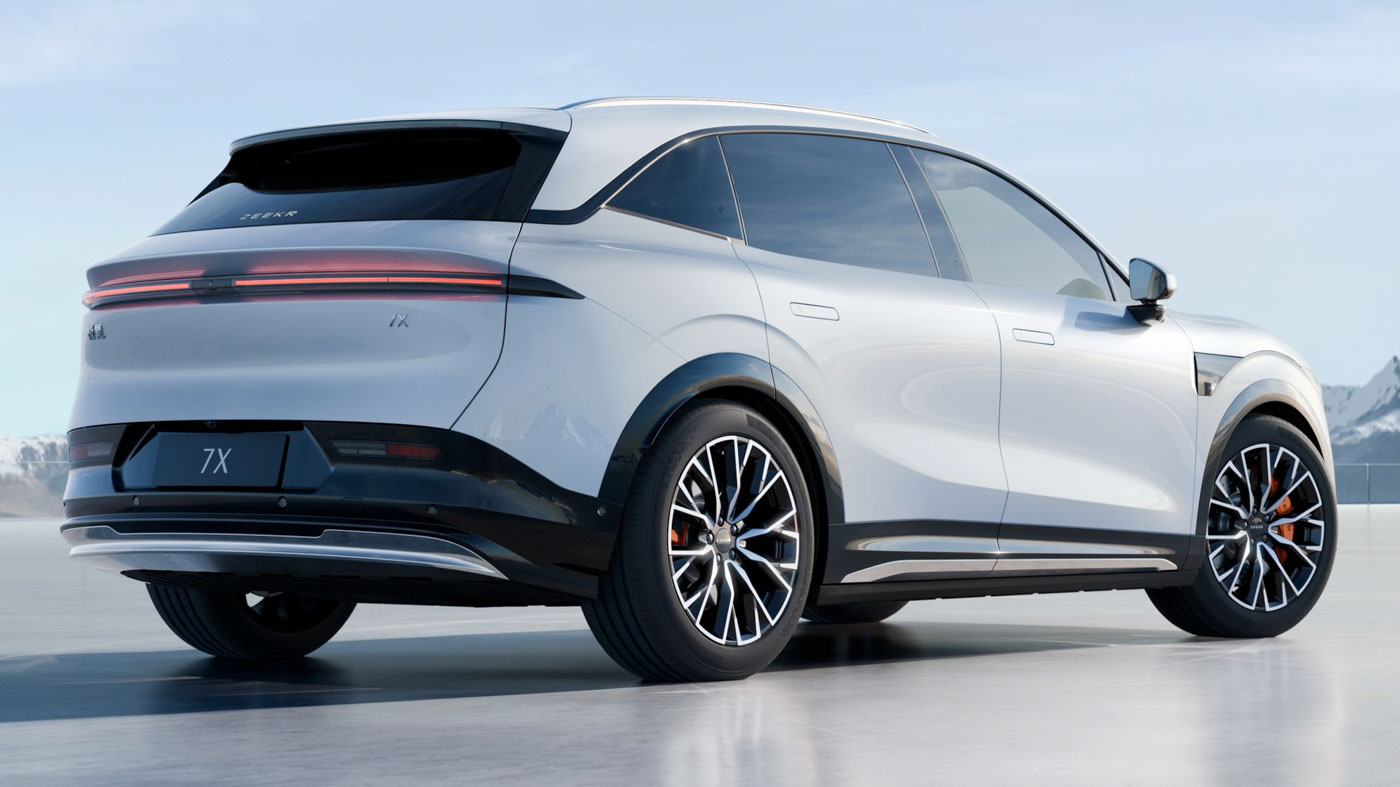
Interior Design Differences Between Zeekr 7X and Toyota bZ4X
The driver's cabin of Toyota bZ4X continues the layout logic of traditional fuel vehicles, with a layered design for the center console. The upper part retains a 7-inch full LCD instrument panel, and functions are operated through a combination of physical knobs and touch buttons. This design centralizes commonly used functions (such as air conditioning adjustment and driving mode switching) near the steering wheel, reducing the need to shift gaze while driving. The storage space layout emphasizes practicality, with a central armrest box deep enough to hold cups and small electronic devices. The door panel storage compartments are layered, making it convenient to sort and store cards and receipts.
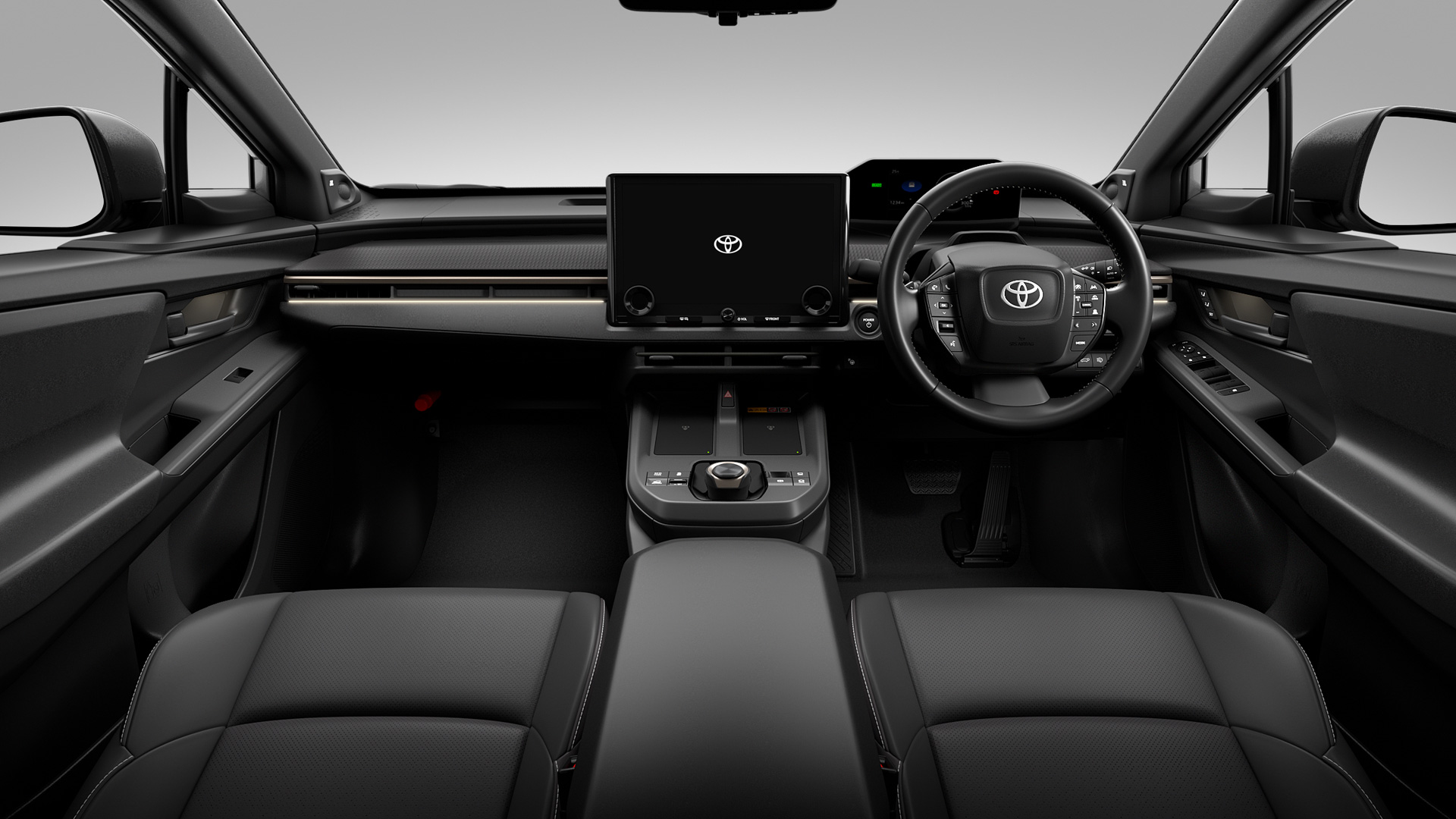
The cockpit of the Zeekr 7X completely breaks traditional structures, with the center console adopting a seamless curved surface design. The 16-inch floating screen is integrated with the air conditioning vents. Physical buttons have been significantly reduced, retaining only a small number of touch-sensitive functional keys, with all operations relying on the central screen or voice commands. The steering wheel integrates a touch feedback area, which uses pressure sensing to confirm functions. This design requires users to adapt to a new interaction logic but enhances visual simplicity.
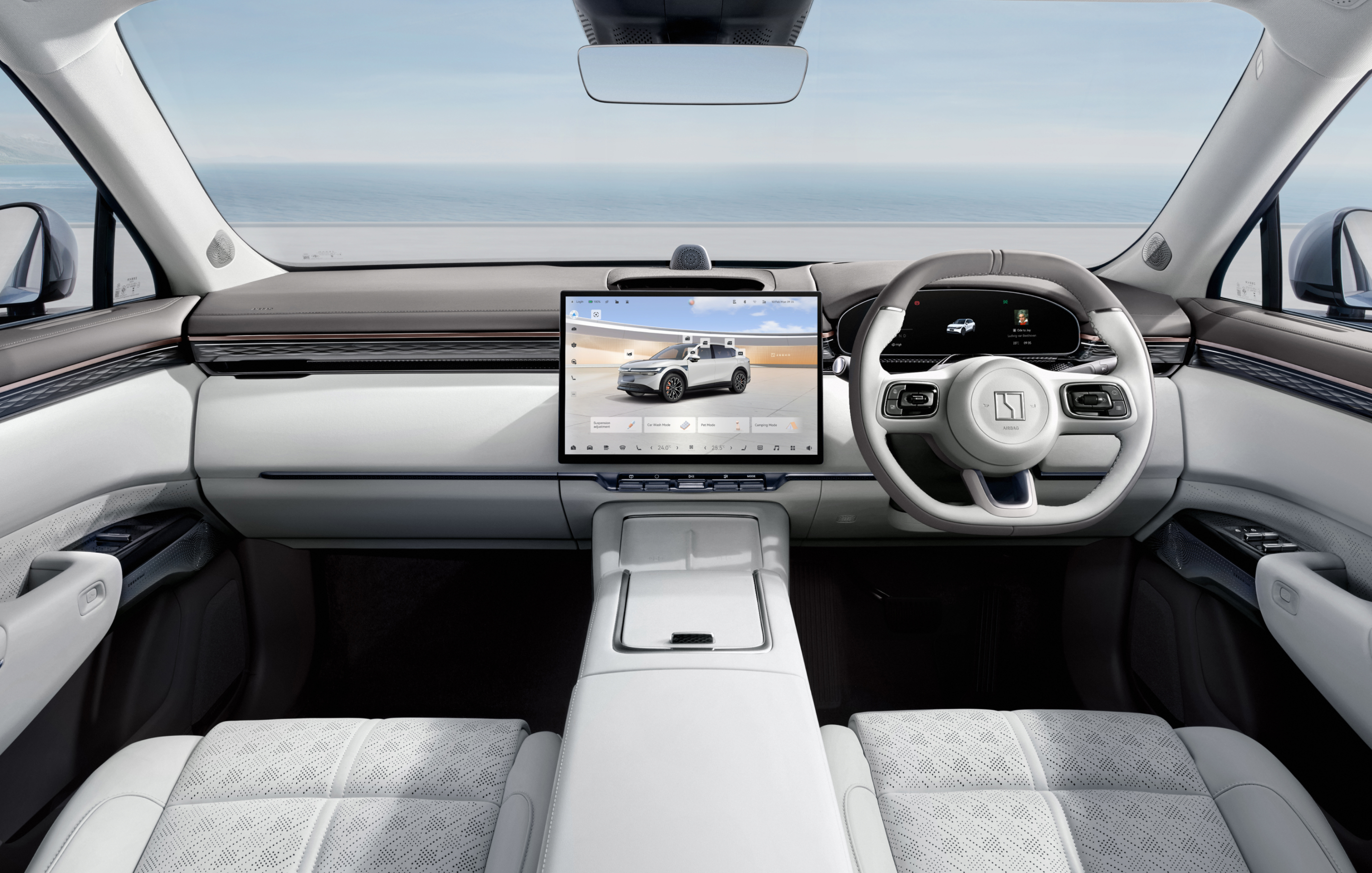
Differences in Vehicle Systems
The Toyota bZ4X's interactive system emphasizes reliability and ease of use. Its 14-inch center screen is equipped with an operating system that supports basic app expansion, and voice control can operate core functions such as navigation and air conditioning. Its standout feature is the retention of a traditional instrument cluster and HUD (Head-Up Display) for dual information presentation, while a set of physical knobs (including 8 buttons for driving modes, air conditioning control, etc.) ensures reliable blind operation. The steering wheel offers both conventional and Yoke-style options; the latter optimizes steering feel but sacrifices partial visibility of traditional instruments.
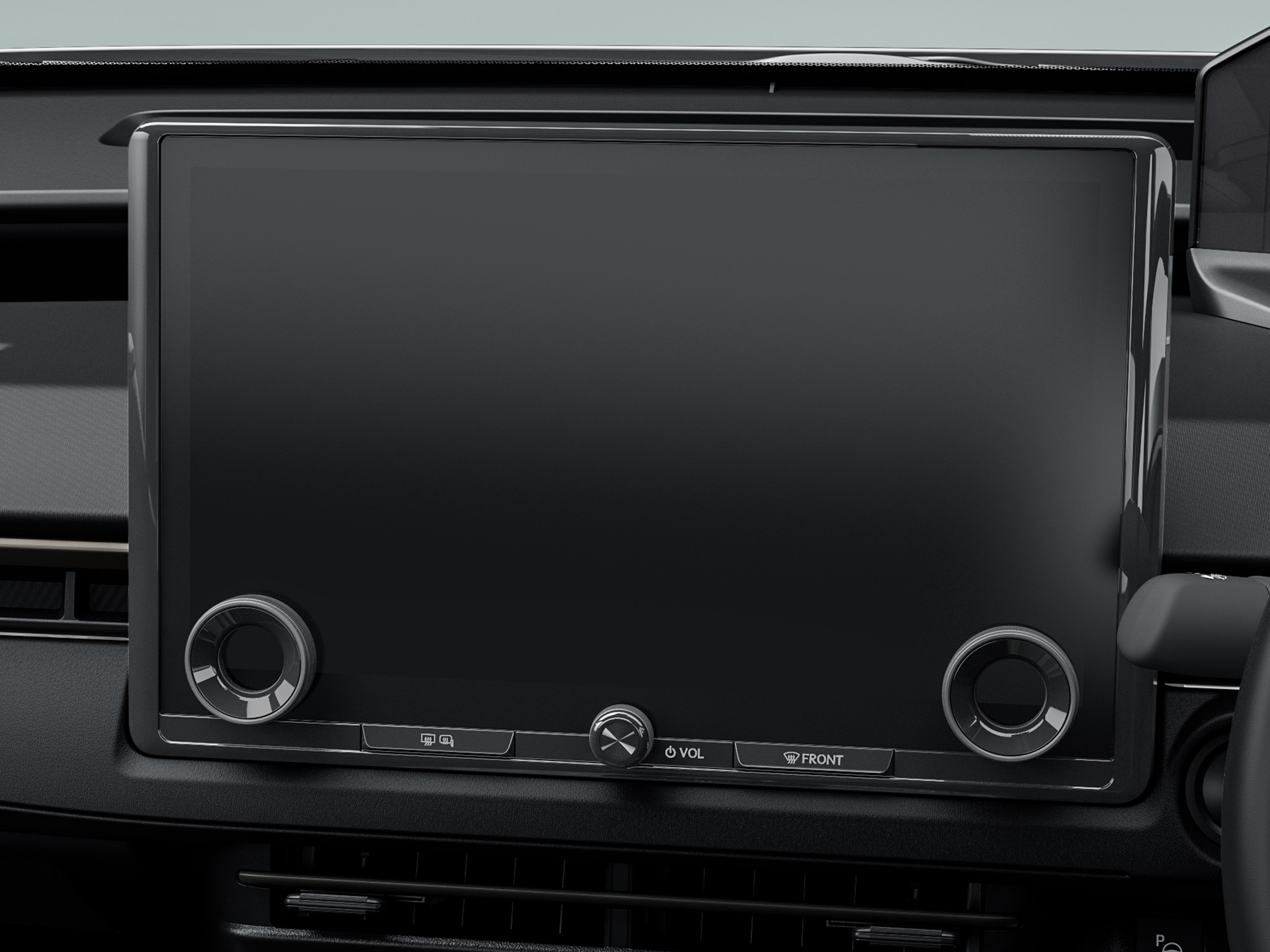
The Zeekr 7X's interactive system strives for deep intelligence, featuring a Qualcomm Snapdragon 8295 chip that supports multitasking. Its 16-inch center screen boasts 1.5K resolution and a 120Hz refresh rate and comes with an augmented reality navigation system that can project driving routes onto the windshield. The voice assistant supports continuous conversation and dialect recognition. The rear seats are equipped with an independent entertainment screen and a wireless charging area. The steering wheel integrates 22 touch-sensitive buttons, distinguishing function confirmation and parameter adjustments through different pressure thresholds, achieving "fingertip-level" operational precision.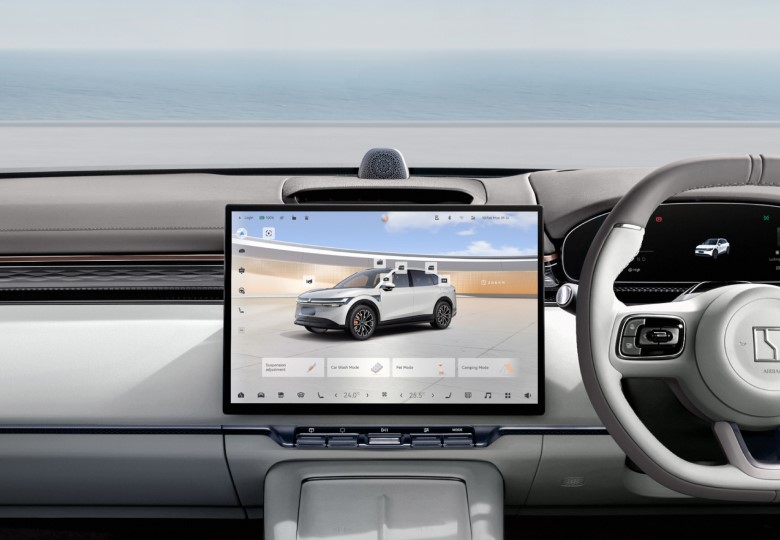
Interior Material Differences
Toyota bZ4X focuses on durability and environmental friendliness in interior materials. The dashboard combines soft foam plastic with piano lacquer, and the door panel trim presents a wood grain texture through laser engraving. The seat material is available in fabric and leather versions. The fabric version uses 3D quilting technology to improve breathability, while the leather version features perforation treatment to enhance heat dissipation. Its eco-friendly concept extends to details, such as an air conditioning filter with an added PM2.5 adsorption layer, and carpets made from recyclable EVA materials.
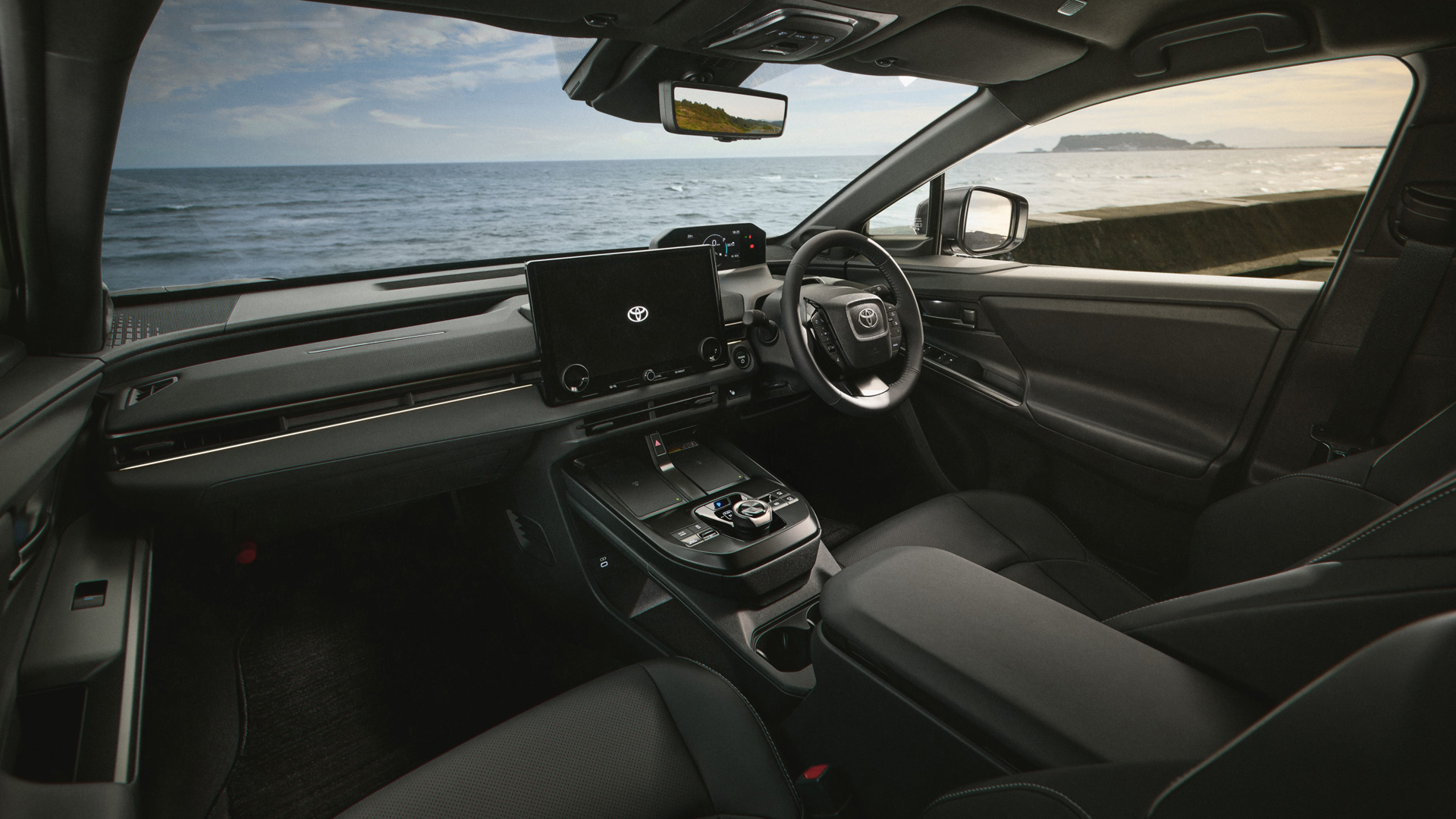
Zeekr 7X pursues the visual appeal of luxurious materials. The dashboard is covered with ultra-fiber suede and natural wood trim, while the door panels are made of Italian calf leather with diamond quilting. The seats innovatively utilize nano-coating fabric for water- and stain-resistance while maintaining fabric breathability. The cabin features 132 LED ambient light beads, which change lighting effects according to the driving mode. At night, it can project the brand logo or personalized patterns.
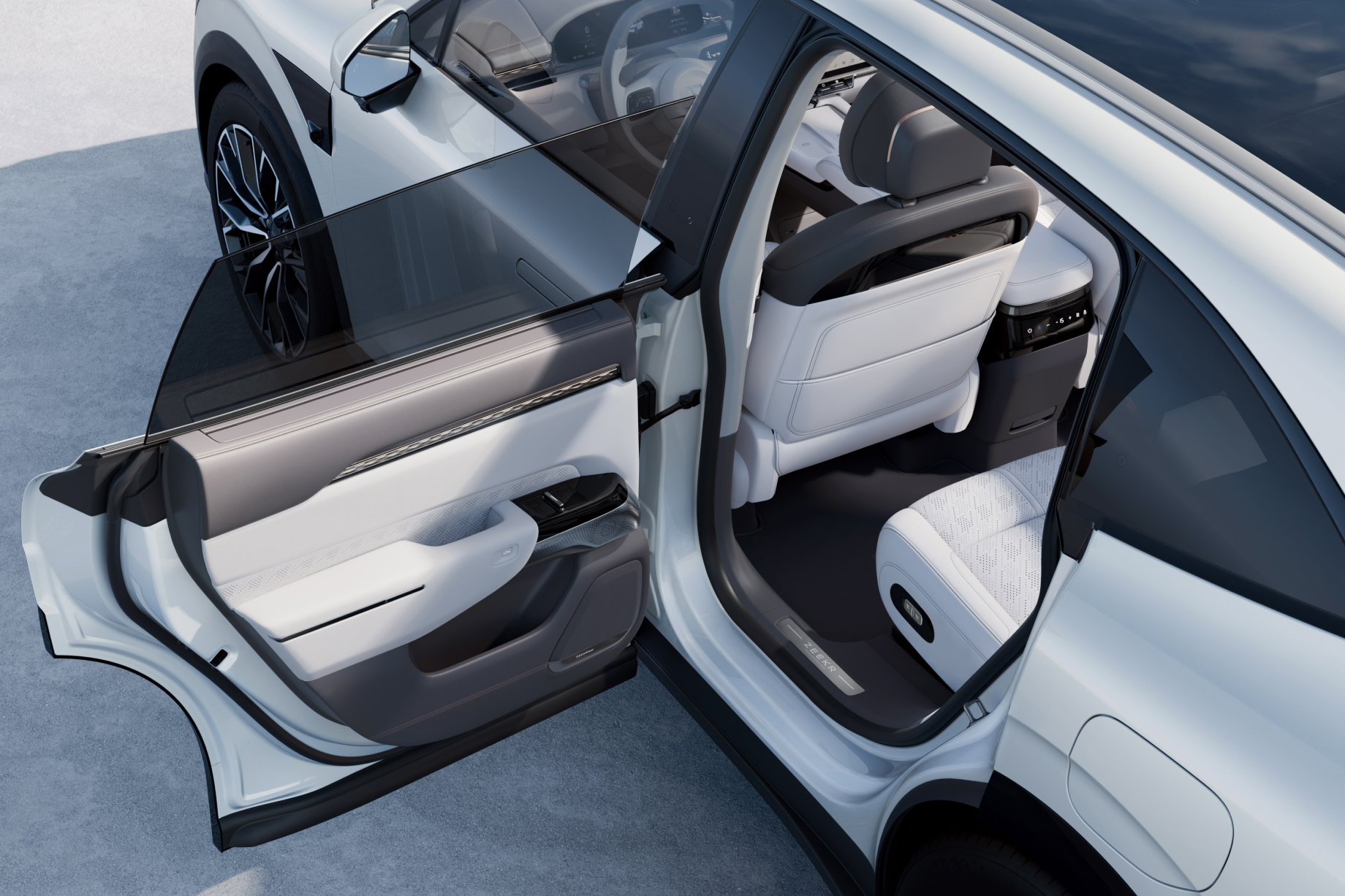
Seat Comfort Experience
The Toyota bZ4X's seat design focuses on basic comfort. The front seats offer 8-way power adjustment and heating functionality, with higher trims adding a ventilation module. The seat padding uses high-density polyurethane foam, and the cushion length reaches 520mm to ensure long-distance driving support. The rear seatback angle is fixed at 105°, equipped with three adjustable headrests, but lacks a center armrest and heating function.
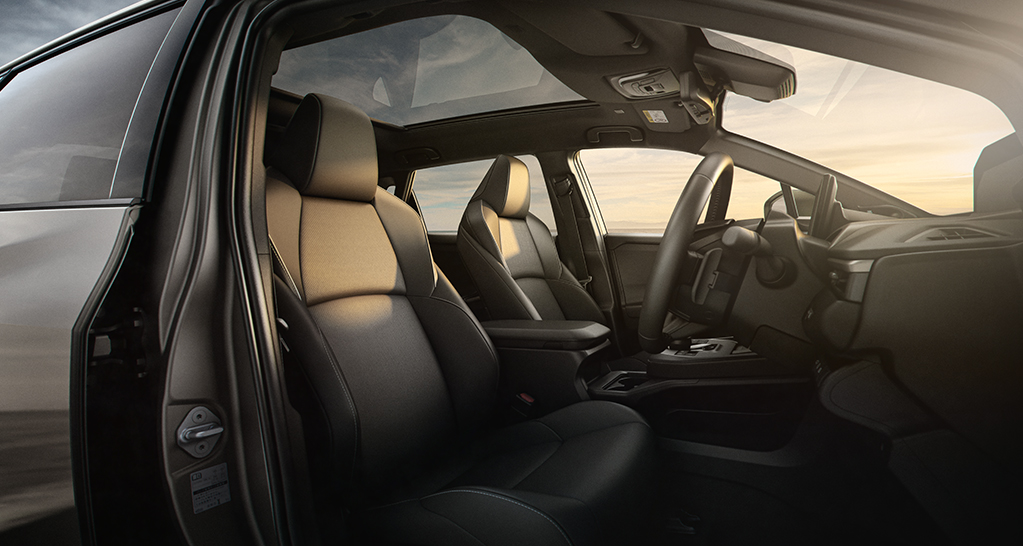
The ZEEKR 7X's seating system emphasizes all-scenario adaptability. The driver's seat supports 14-way power adjustment with heating/ventilation/massage functions (offering 6 modes including pressing and kneading), and the seatback is equipped with a dual-density memory foam layer. The rear seats feature a 27° electrically adjustable recline, and the center armrest integrates wireless charging and cup holders. The flat floor design is combined with a unique air-pressure adaptive suspension system, which adjusts seat support strength in real time based on road conditions.
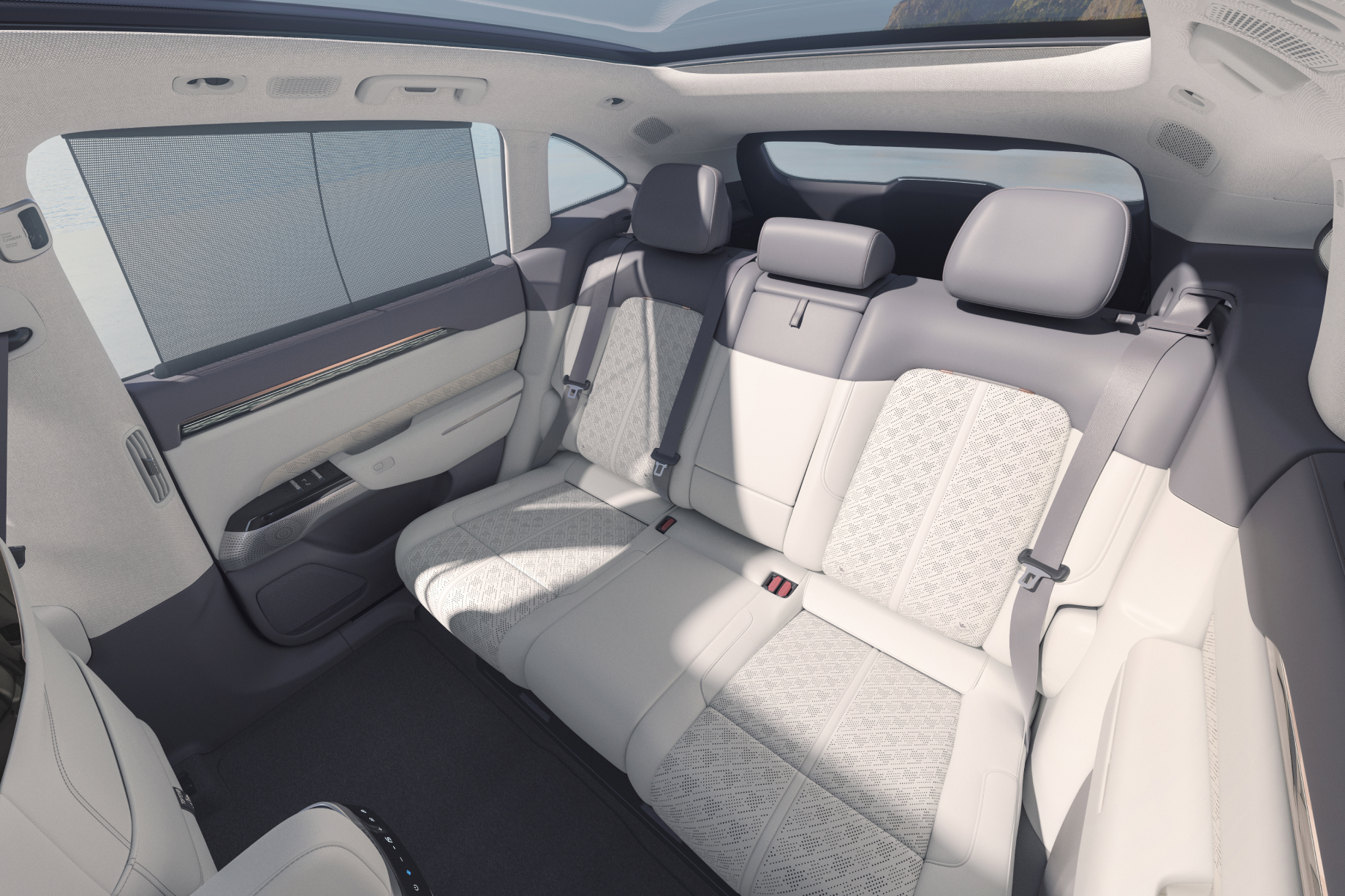
Space Design Differences
The Toyota bZ4X adheres to a functionality-first principle. The front row is equipped with a refrigerated armrest box (7.5L capacity), and the door panel storage slot has a depth of 220mm. The standard trunk volume is 620L, and the rear seats support a 4/6 split fold, extending up to 1.95 meters in depth when folded. Its innovative "Magic Carpet Storage System" uses a hidden storage compartment under the floor and detachable hooks to achieve organized storage for scattered items.
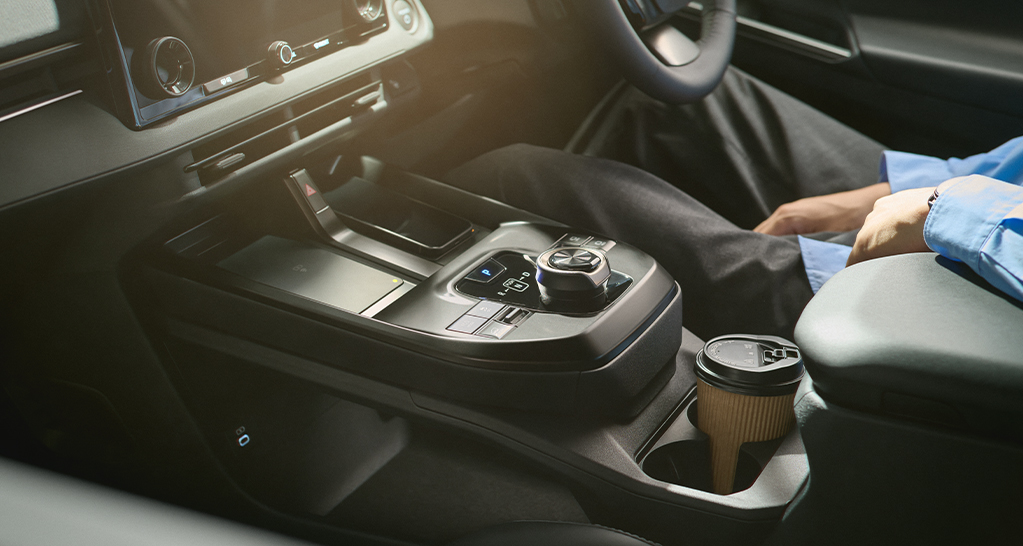
Zeekr 7X advocates the concept of multifunctional space, with the front row equipped with a refrigerated armrest box (capacity of 7.5L) and door panel storage pockets with a depth of 220mm. The trunk has a standard volume of 620L, and the rear seats support a 4/6 split-folding design, providing a length of up to 1.95 meters when folded flat. Its innovative "Magic Carpet Storage System" uses hidden storage compartments under the floor and detachable hooks to organize scattered items efficiently.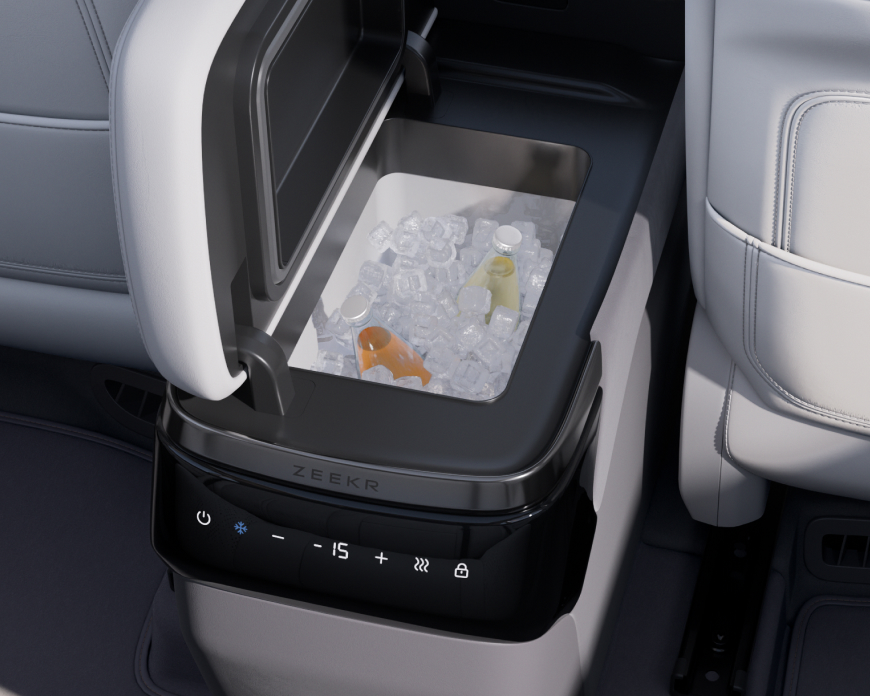
Interior Detail Differences
The Toyota bZ4X retains the tactile feel of physical keys and mechanical buttons, with commonly used features like the hazard light switch and electronic parking brake adopting a traditional layout. The air conditioning system is equipped with a PM2.5 filter and ion generator, and the direction of the air outlet blades can be adjusted manually. The rear row has independent air conditioning vents and charging ports but lacks a central armrest.
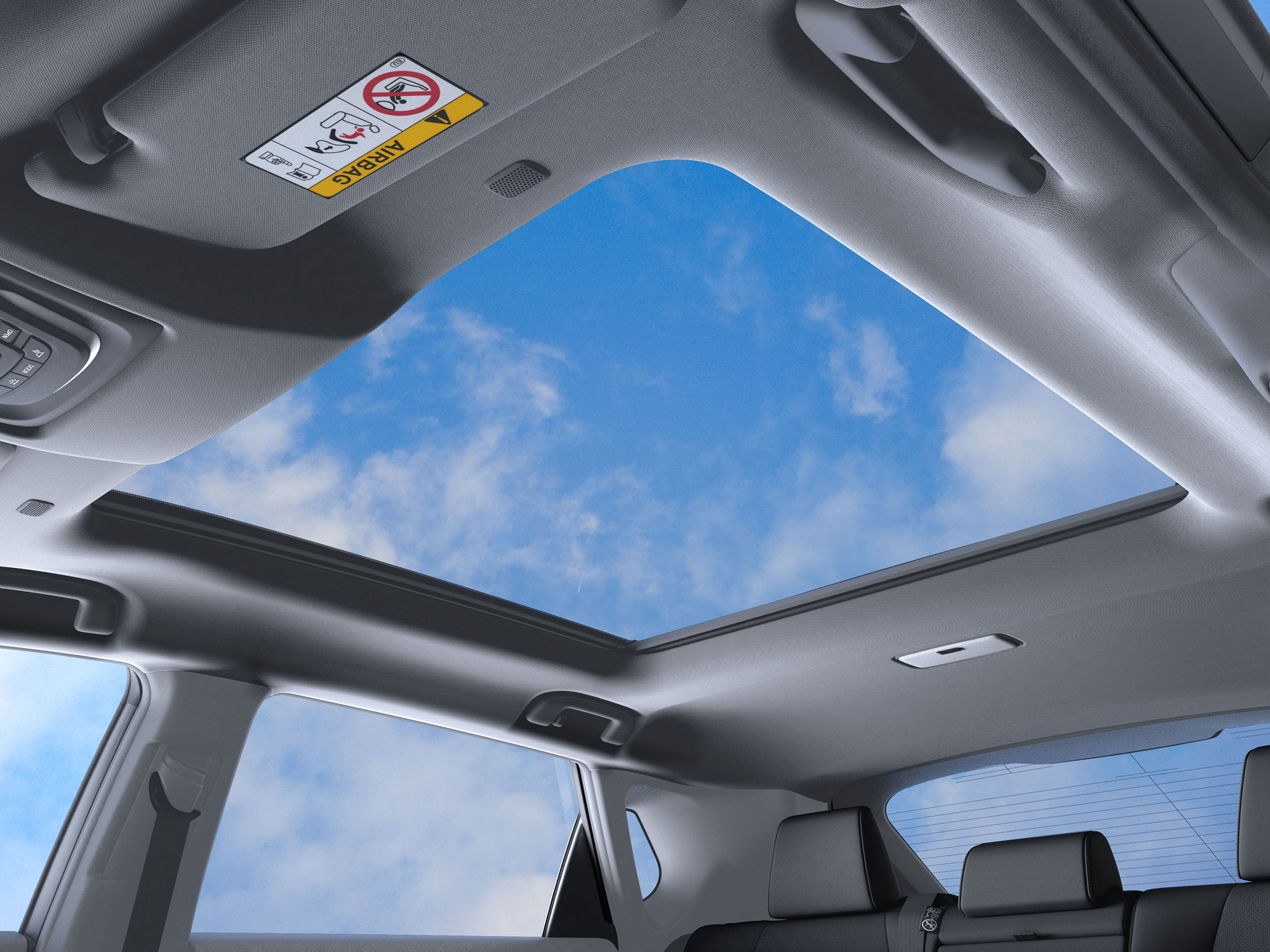
The Zeekr 7X eliminates physical keys, fully relying on digital keys and smartphone connectivity. The air conditioning system supports zoned temperature control and comes with an aromatherapy system, with air outlets hidden on both sides of the dashboard. The rear row features a central armrest with massage functionality and an independent entertainment screen, while hidden storage space is set up beneath the floor.
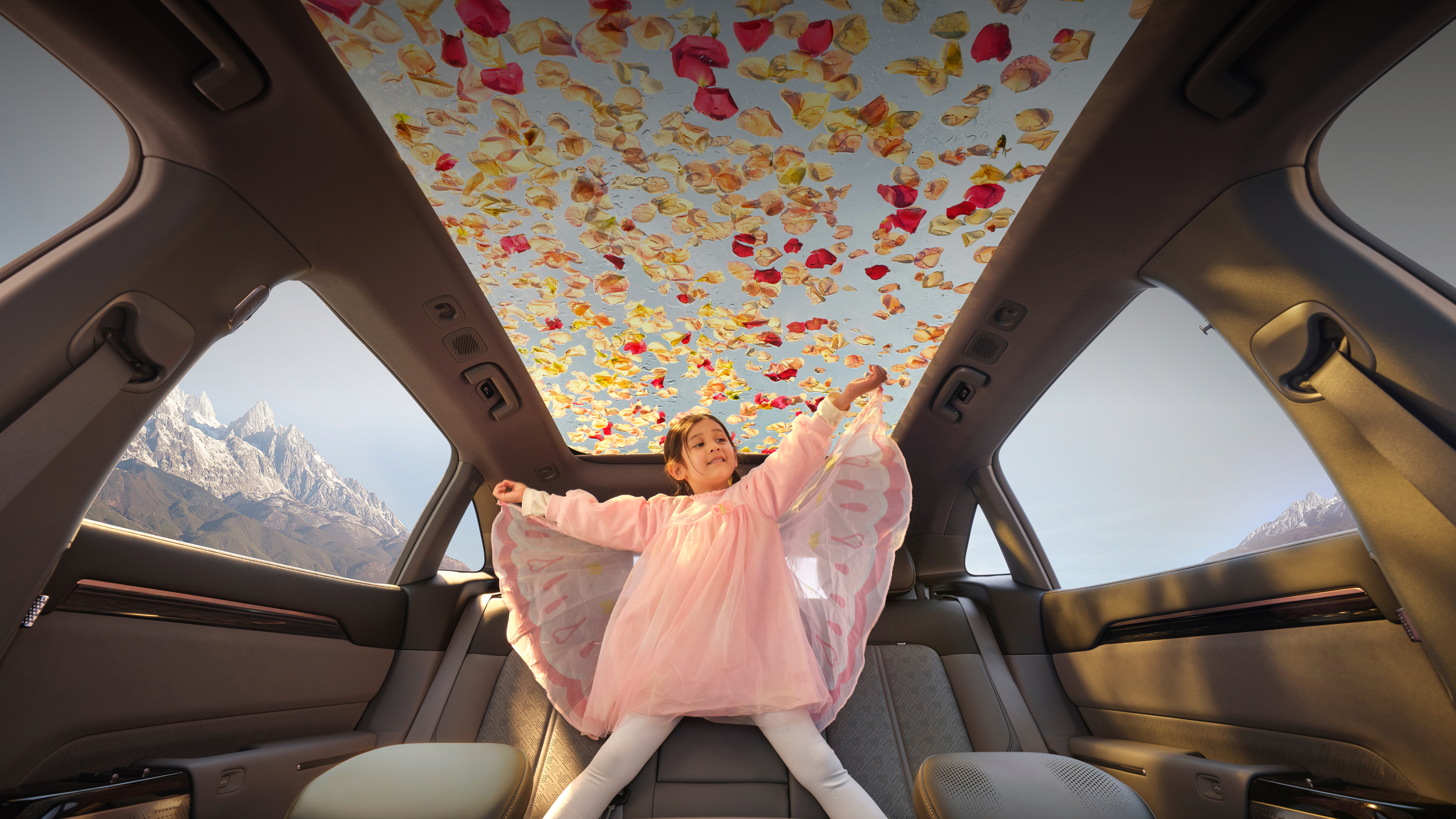
Zeekr 7X and Toyota bZ4X Powertrain
When we talk about electric vehicles, it’s hard to ignore their power and range, which are the fundamentals of an EV. However, we know that Chinese car manufacturers are leading in the field of electric vehicles, and thus, in terms of range and power, Zeekr 7X also demonstrates significant advantages.
The Toyota bZ4X powertrain adopts a front single-motor or front and rear dual-motor layout, with the motor and battery pairing more inclined toward balancing daily driving needs and manufacturing costs. For instance, the single-motor version (FWD) focuses on urban commuting, while the dual-motor version enhances light off-road capabilities through the X-MODE four-wheel-drive system.
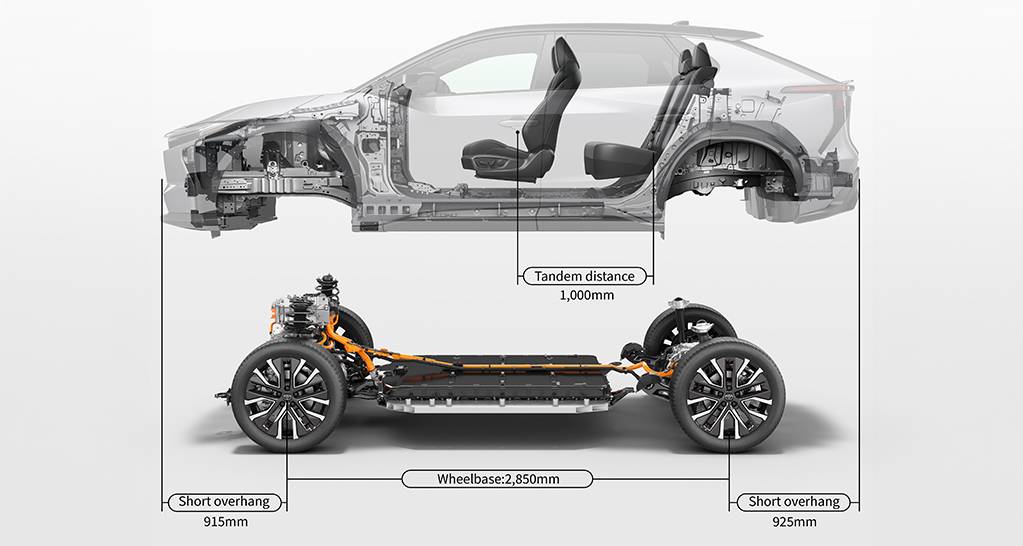
In contrast, the Zeekr 7X adopts an 800V high-voltage platform, which is its core advantage in the powertrain. The 800V high-voltage architecture not only supports higher charging power (e.g., charging from 10% to 80% in 15 minutes) but also improves motor efficiency and battery energy density, achieving dual improvements in performance and range.
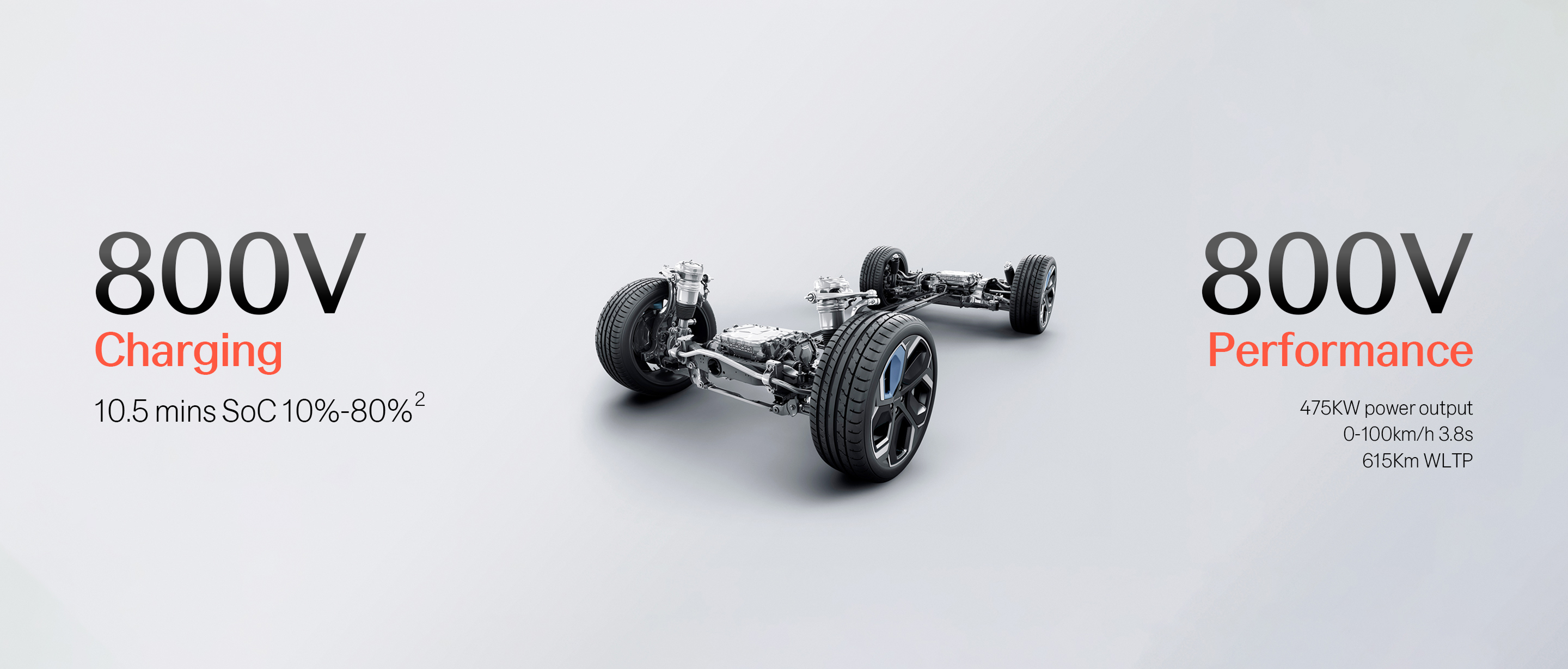
Performance Comparison
When it comes to motor configurations, the differences between the two cars are particularly striking. The 2025 Toyota bZ4X single-motor version has a maximum power of about 165kW (224 horsepower), mainly meeting urban commuting needs, with 0-100km/h acceleration at approximately 7.4 seconds.
The dual-motor version achieves a total power output of 252kW (343 horsepower) through the combination of front and rear motors, providing a more balanced power output and a 0-100km/h acceleration time of approximately 5.1 seconds. This tuning aligns with Toyota's understanding of family users, delivering sufficient but not aggressive power to ensure smooth driving and comfortable riding.
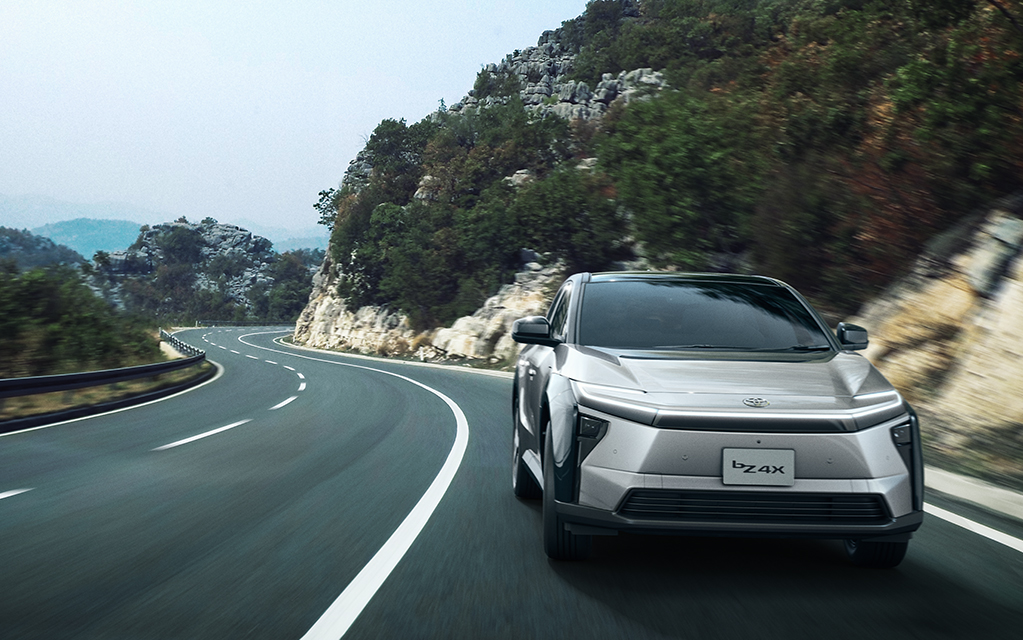
Zeekr 7X adopts a high-performance motor combination. The single-motor version (rear-wheel drive) delivers a maximum power output of 310kW (422 horsepower) with a 0-100km/h acceleration time of around 5.8 seconds; while the dual-motor version achieves a total power output of 475kW (647 horsepower) and a 0-100km/h acceleration time of just 3.8 seconds.
This level of power output is close to or even surpasses some fuel-powered performance cars. The rapid response and high torque output of the motors allow the driver to experience strong acceleration during starts or overtaking.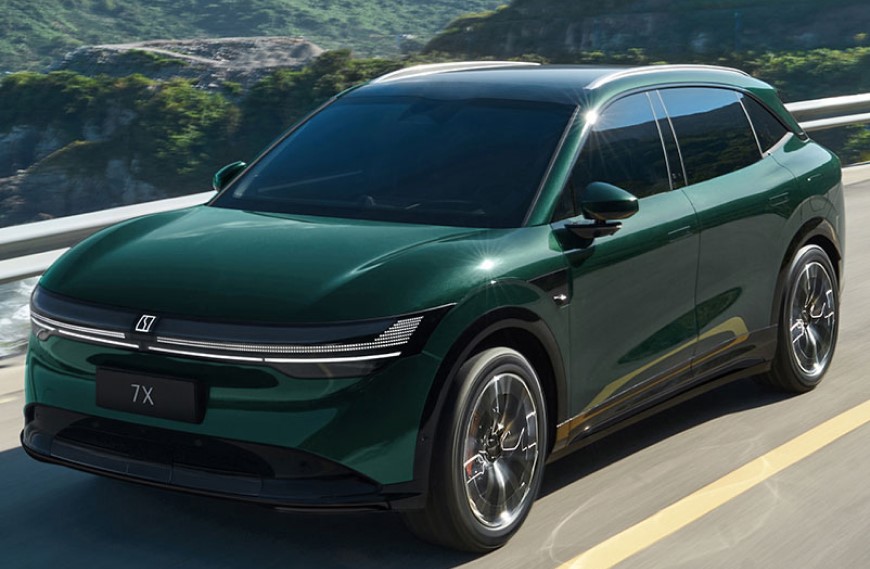
Comparison of Endurance
The 2025 mid-term facelift of the bZ4X has seen significant improvements in its range, with an approximate 30% increase compared to the previous model.
The FWD version can achieve an ultra-long range of 746km (WLTC), which mainly meets daily usage needs. For urban commuting users, a range of 746km can cover a week's usage. Meanwhile, the AWD version provides a range of 687km.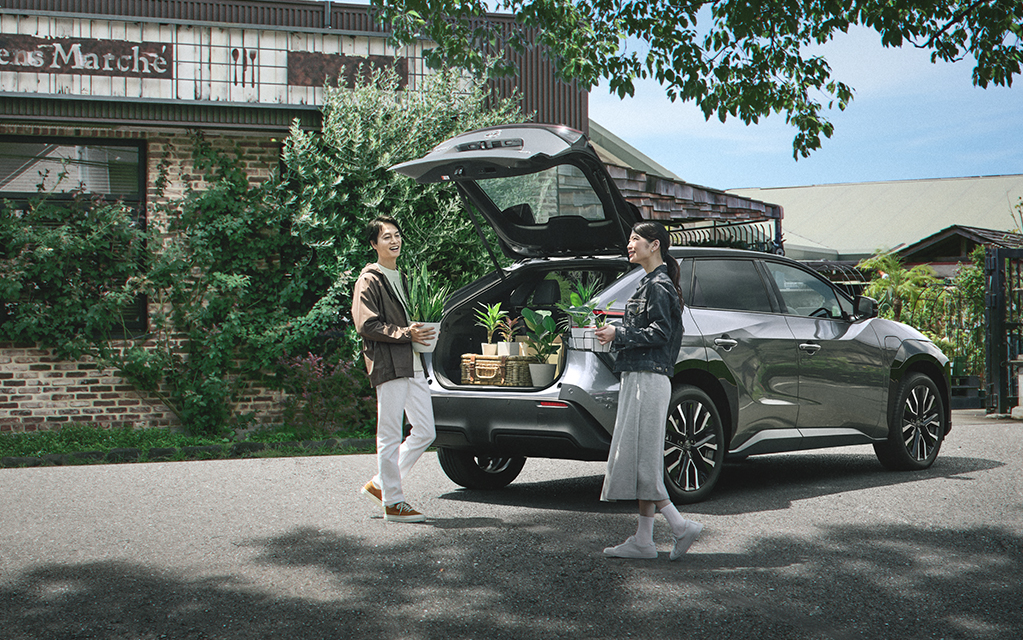
However, Zeekr 7X's range performance is not bad either. The RWD model can achieve a maximum range of 740km (NEDC). According to conventions, if using the WLTC standard, the range is approximately 615km; the AWD model can achieve 635km, which translates to about 515km under the WLTC standard.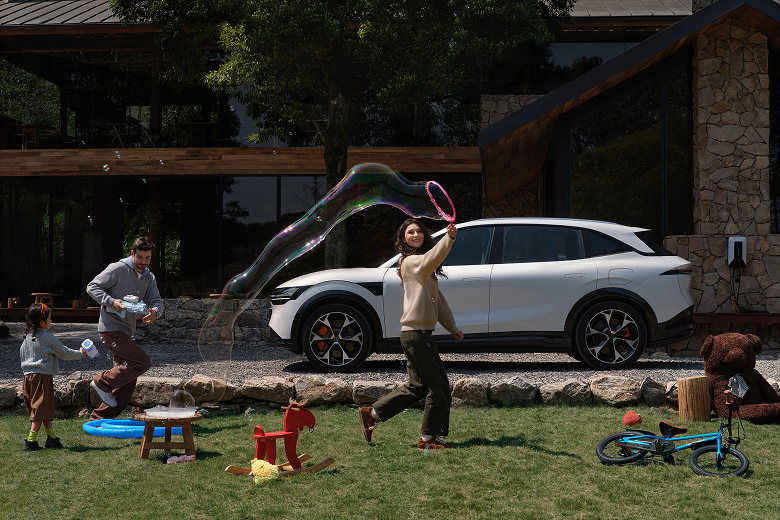
Charging speed is a key factor affecting the user experience of pure electric vehicles, and the technical differences between the two cars are very obvious in this regard. Zeekr 7X, with its 800V architecture, has a significant advantage.
The Toyota bZ4X supports 150kW fast charging, which theoretically can charge from 20% to 80% in 30 minutes. However, in the current market environment, this speed is already relatively conservative. For users requiring long-distance travel, the wait time for charging is still relatively long. Its charging strategy leans more towards stability to ensure battery safety during the fast-charging process.
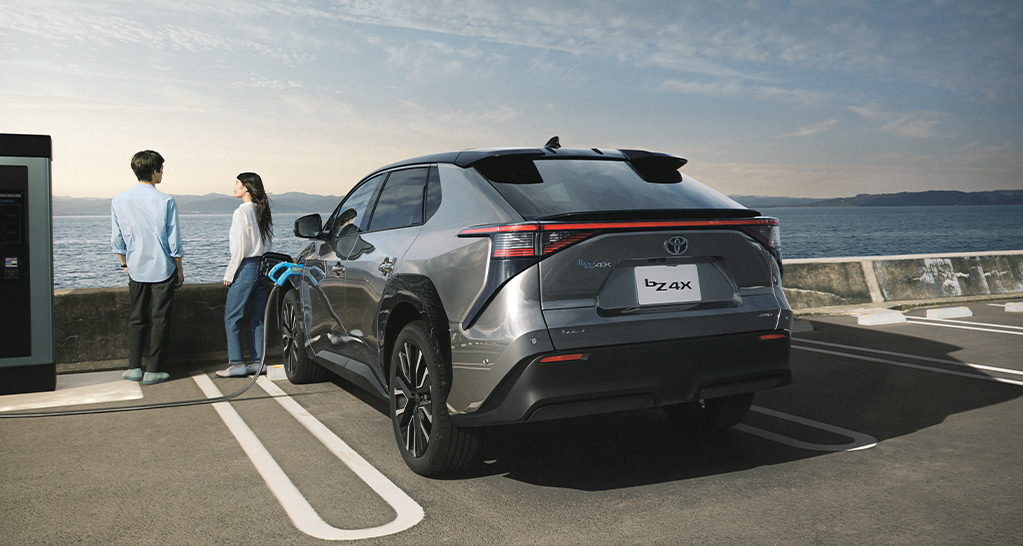
The 800V high-voltage system of the Zeekr 7X allows for up to 292kW DC fast charging, enabling the battery to go from 10% to 80% in about 15 minutes. This improvement in charging speed reduces the waiting time for users, making long-distance travel more convenient. For example, taking a half-hour break at a highway service area is enough to replenish sufficient power to continue driving, significantly enhancing travel efficiency.
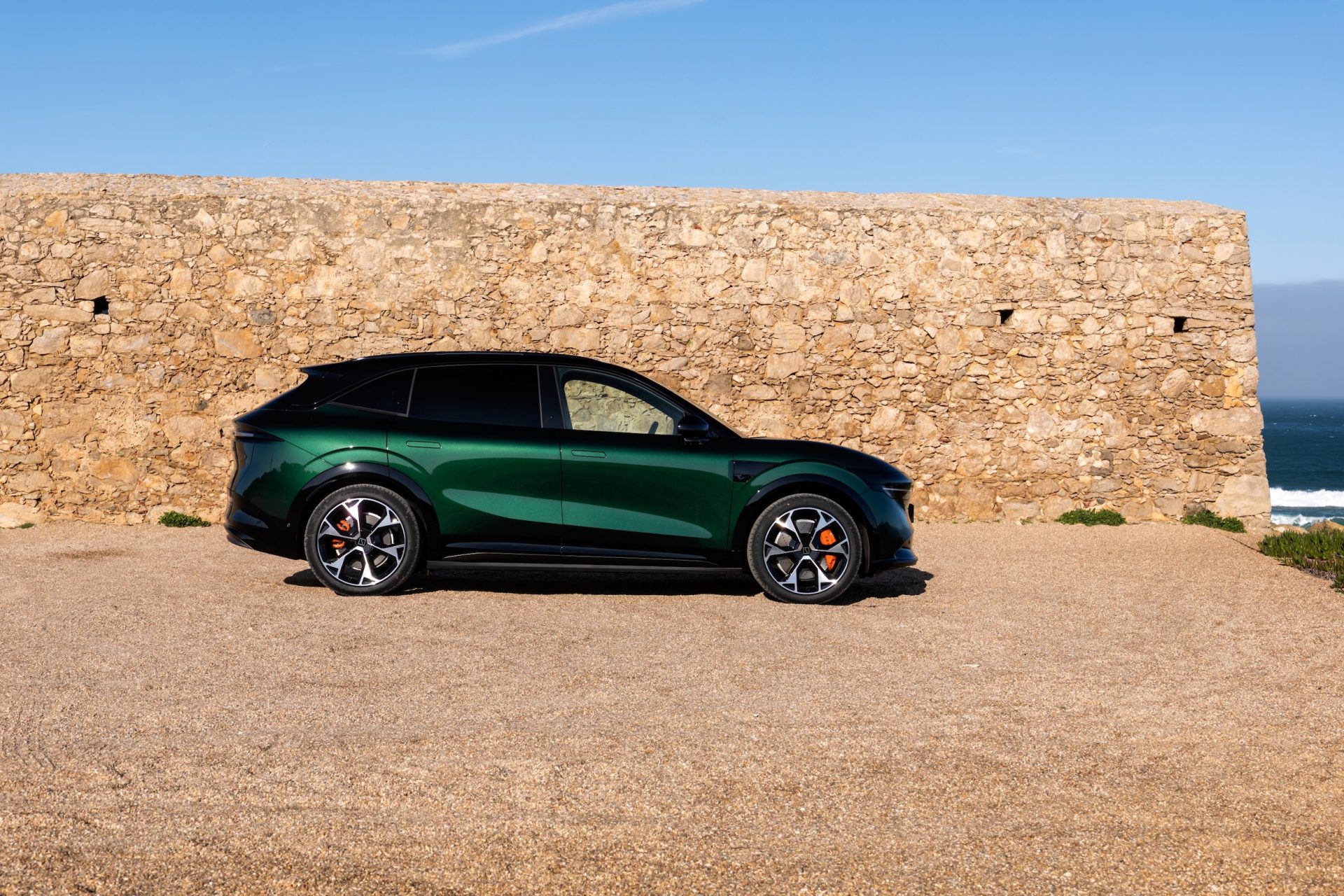
Overall
The Toyota bZ4X and Zeekr 7X represent the understanding of electric vehicles from Chinese and Japanese automakers, and comparing the two side by side is very interesting. The bZ4X attempts a design that Toyota has rarely dared to try in the past, but compared to the Zeekr 7X, the bZ4X still seems a bit conservative.
The bZ4X continues Toyota's reliable gene, making it suitable for consumers who prioritize practicality and environmental friendliness.
The Zeekr 7X, with its avant-garde and tech-savvy design language, paired with more advanced electric vehicle technologies, appeals to users who seek fashion and performance.
If any infringement occurs, please contact us for deletion
Trending News

BYD Sealion 7 is not only cheaper than Tesla Model Y, what other differences do they have?
Is it better to buy the BYD Sealion 7 or the Tesla Model Y? This really makes one a bit hesitant, but before you make a decision, I recommend you take a good look at this article.

Toyota Land Cruiser FJ did not disappoint, the most anticipated civilian off-road vehicle is back.
Since its birth in 1951 under the name Toyota BJ, the Land Cruiser series has accumulated sales of approximately 12.15 million units in over 190 countries and regions worldwide, becoming a global off-road icon spanning more than 70 years.

2026 Toyota Hilux Travo released, the brand-new exterior and interior are highly anticipated
If you're considering buying a Hilux, honestly, the comprehensive innovations in the ninth generation are worth waiting for. While the current model might still have some advantages in terms of reliability and price, the new model offers significant changes in terms of exterior and interior luxury, tech features, and powertrain options.

In Malaysia, which sliding door MPVs are available?
The numerous advantages of sliding door MPVs make many people fond of this type of vehicle. However, MPVs are not a mainstream choice in the car market, so many people might not know which MPVs are available domestically.

Suzuki Fronx vs. Toyota Yaris Cross comparison, which one is more worth buying?
Compact SUVs are increasingly favored by consumers for their flexibility and fuel efficiency. Consequently, the Suzuki Fronx has also entered this market segment, attracting significant attention.
Popular Cars
Car Compare

